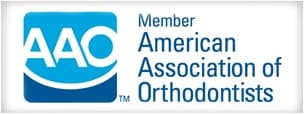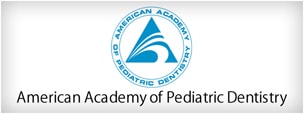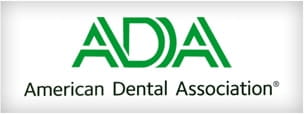Post-Op Care Instructions
Instructions To Be Followed Prior To Sedation Appointment
MEDICAL INSTRUCTIONS:Your child will be premedicated in order to successfully treat his or her dental condition. The ultimate goal of our office is to ensure safe, successful and comfortable dental treatment. By following each of these guidelines, we will achieve this goal. Please follow these instructions carefully before the appointment.
SPECIFIC INSTRUCTIONS:
1) Allow your child to have a good dinner the evening before the appointment. Please make sure that their normal routine is followed the evening prior to the dental appointment. (No overnights at relative’s house, etc.) Your child may also have a snack before bedtime.
2) Medication will be given by mouth (orally). Therefore, the child must have an empty stomach in order for the medication to be effective for dental treatment. The rule is NOTHING TO EAT OR DRINK FOUR HOURS PRIOR TO THE APPOINTMENT. Occasionally, our staff will recommend clear fluids (such as water or apple juice) up to two hours before the appointment. It is best to check with our office before any fluids are administered. Unless instructed by our office, your child must have an empty stomach.
3) It is extremely important that you alert us, prior to the sedation appointment, of any medication your child may be taking (prescription or over-the-counter). It may be necessary to alter the administration of that medication on the day that your child receives sedative medication.
4) Your child will not receive a general anesthetic. The medication is a sedative, which will relax your child and make him or her feel drowsy. Local anesthetic will be used to "numb" the areas to be treated for maximum comfort. Nitrous oxide ("happy air," "laughing gas") will be used for further comfort.
5) After ingestion of the medication, we wait approximately 15-30 minutes before beginning the treatment. During this time, your child will remain with you in the waiting area. The child will then be escorted to the treatment area by an assistant to accomplish the dental treatment.
6) Parents are requested to remain in our reception area during the treatment.
7) If at all possible, we request that on treatment day, no friends or siblings accompany the child receiving treatment. The visit will usually require one and a half to two hours.
8) Please arrive 15-20 minutes earlier than the scheduled appointment time because it takes 15-20 minutes for the medication to take effect.
9) An important point to remember is that if your child develops a fever, productive cough and/or heavy nasal drainage within 24 hours of the appointment, please notify our office. We may need to reschedule.
AFTER TREATMENT INSTRUCTIONS:
On the day of treatment, our office will provide you with specific, written, post-operative instructions. Please follow these instructions carefully. Do not hesitate to call the office at 585-6373 if any questions come to mind.
Care Of The Child Following Restorative Appointment
Your child received restorative dental treatment today. Please follow these instructions once you leave our office to help your child have a more pleasant experience with the normal process following dental treatment.
Your child received local anesthetic to make their teeth "go to sleep." Their lips and tongue are also "asleep." Do not allow your child to bite, suck, rub or scratch their lips while they feel numb. Please watch your child closely so that he/she does not chew their lips before the numbness wears off. For this reason, we have placed a "pillow" (cotton roll) in the mouth to remind the child that their teeth are still "sleeping." We recommend that the child keep this in place until the numbness wears off (usually 1- 1 1/2 hours). Normally, the younger children do not yet understand the concept that local anesthetic has to wear off over a period of time, so sometimes they may be a bit fussy due to the funny feeling in their lips caused by the numbness. Please reassure them that their lips are still "asleep," and that they will wake up soon. Please do not let them bite, rub or scratch their lip.
As soon as you leave the office, please feed your child a milkshake or fruit juice. This is recommended for two reasons:
1) It is important to raise the blood sugar level back to normal, thus aiding in a quicker recovery.
2) The lips are numb, and chewing should not be attempted until after the numbness is gone. These may be sipped through a straw or spoon fed. Once the numbness is gone, your child may return to a normal diet. In some cases, a soft diet may be better tolerated for the first few meals following dental treatment.
Sensitivity and redness around the gums of the teeth that were worked on is not uncommon for three to four days following treatment. Sensitivity in newly restored teeth is also common. This will normally subside within the first week.
It is extremely important to keep the teeth and gums very clean following restorations in order to ensure that the gums return to normal, especially in areas that received crowns. Poor oral hygiene will delay the natural healing process and this can lead to prolonged soreness and bleeding of the gums. Good oral hygiene is imperative following restorative treatment. This can be accomplished with good toothbrushing, warm salt water rinses, glyoxide applications or chlorhexidine rinses.
Minor discomfort is not uncommon following dental treatment. If your child experiences discomfort once the numbness wears off, Tylenol or Motrin may be given as directed by the age and weight of the patient.
Thank you for allowing us to help your child have a positive dental experience. If you have any questions, please call our office.
Care Of The Child Following Sedation
Your child received a sedative medication, and he/she may be sleepy following the appointment. It is okay for the child to sleep once at home. However, it is extremely important to monitor the child and check every 5-10 minutes for proper head position and proper breathing. Do not allow your child to sleep until they have received something to raise the blood sugar levels (i.e. milk shake or fruit juice).
Since your child did not eat prior to this appointment, their blood sugar level will naturally be low. Low blood sugar levels can lead to prolonged sluggishness, crankiness and fussiness. We recommend that you feed your child a thick milk shake or fruit juice as soon as you leave the office. This is recommended for two reasons:
1) It will raise the blood sugar level back to normal, thus aiding in a quicker recovery.
2) The lips are numb, and chewing should not be attempted until after the numbness is gone.
Activity of your child should be monitored and limited for the remainder of the day following the appointment. Do not allow your child to return to school or participate in any extra-curricular activities for the remainder of the day.
Nausea following the appointment is uncommon. However, if nausea is experienced by your child, it is okay to give him/her the same medication you would normally give them for nausea as directed by the age and/or weight of the child. If persistent vomiting occurs, please call our office.
Although not expected, elevated body temperature may be seen following a sedation appointment. If this occurs, Tylenol or Motrin may be given to the child as directed by the age and/or weight of the child.
Minor discomfort is not uncommon following dental treatment. If your child experiences discomfort once the numbness has worn off, it is okay to give the child Tylenol or Motrin as directed by the age and/or weight of the child.
As stated before, chewing should not be attempted while your child is numb. However, once the numbness has passed, it is okay for them to eat a normal diet. In some cases, a soft diet may be more easily tolerated for the first few meals following dental treatment.
If you have any questions or cause for concern, please call our office at 585-6373.
Thank you for allowing us to help your child have a positive dental experience.
Care Of The Mouth Following Extractions
Your child had teeth extracted today. Please follow these instructions in order for your child’s recovery process to be an easy and pleasant experience.
NUMBNESS:Your child’s lips will be numb for about 1-1 1/2 hours after you leave the office. Please watch your child carefully so that they do not bite, suck, chew or scratch on their lips while they are numb. We recommend that your child keep the gauze in his/her mouth until the numbness has worn off. You may change the gauze as needed.
EATING:Since your child has not eaten prior to the appointment, he/she will be hungry when you leave the office. However, due to the numbness, your child should not chew until the numbness has worn off. We recommend that you spoon feed your child a thick milkshake as soon as you leave the office. Do not let your child suck through a straw the first 24 hours following the extractions. Once the numbness has worn off, you may feed your child a substantial soft meal. The diet may return to normal after the first 24 hours or as tolerated by the child. Please avoid hot and spicy foods for two to three days following the extractions. Please avoid carbonated beverages the first 24 hours following the extractions.
ORAL HYGIENE:Oral hygiene the first 24 hours following extractions should consist of toothbrushing (with water only and no toothpaste if necessary), being careful in the areas of the extractions as to not stimulate spontaneous bleeding and gentle warm salt water rinses with no active spitting. Avoid active spitting the first 24 hours after the extractions. Normal oral hygiene can be resumed after the initial 24 hours. Clean gums heal much quicker, so good oral hygiene is imperative. Warm salt water rinses (2-3 times daily) can also help keep the gums clean.
BLEEDING:Some minor bleeding or oozing from the extraction site following an extraction is expected. However, if active bleeding does occur, fold one piece of gauze in half and then in half again and place it into the extraction site and have your child bite down firmly for about 10 minutes. Repeat this process as necessary. A tea bag dipped in lukewarm water may be used in place of the gauze. In most cases, firm pressure applied to the area will stop active bleeding.
Keep fingers and the tongue away from the extraction site as this could stimulate spontaneous bleeding.
Have your child sleep with their head elevated the first night following the extractions.
ACTIVITY:Please limit your child’s activity for the remainder of the day following the child’s extractions. Playing and jumping should be limited as this could stimulate spontaneous bleeding from the extraction site. Do not allow your child to return to school for the remainder of the day following the extractions or participate in any extracurricular activities. In most cases, your child will be able to return to normal activity the following day.
DISCOMFORT:Minor discomfort may be experienced by your child once the numbness wears off. If this occurs, it is okay to give them Tylenol or Motrin as directed by the age and/or weight of the child.
If you have any questions or cause for concern, please don’t hesitate to call the office at 585-6373.
The procedure to place a stainless steel crown is accomplished in one appointment. The tooth is prepared for the crown, the decay is removed, and then a pre-sized crown is fit and cemented. The crown is placed over the visible part of the crown of the tooth. This crown will function just as the natural tooth did, and the tooth with the crown will be lost naturally at the appropriate age.
Although nothing is completely "child-proof,” the stainless steel crown is the restoration of choice for large cavities in baby teeth because it can normally withstand the rigors of childhood. The stainless steel crown is one restoration that will normally last until the baby tooth is lost naturally.
As is the case with most restorative procedures, this procedure will be accomplished with the use of local anesthesia to completely numb the area to be restored. This will ensure complete comfort for the child.
Sensitivity to hot and cold or even slight discomfort may be experienced for 2-3 days after the crown is placed. Children’s Tylenol or Motrin may be used if this occurs. Sometimes the child may complain that the bite feels different for the first few weeks as they adjust to the crown. This is not abnormal. Good oral hygiene is imperative so that the gums around the new crown may return to normal more quickly. Normal toothbrushing should be performed in this area.
Care Of The Teeth And Gums Following Placement Of Crowns
Your child received crowns on their teeth today. Please follow these instructions in order for the teeth and gums to quickly return to normal and your child to have a more pleasant recovery experience.
ORAL HYGIENE:The gums surrounding the teeth where the crowns were placed will be red and slightly irritated for 4-5 days following the appointment. Excellent oral hygiene is imperative around these teeth in order for the gums to return to normal. Although the gums will be sensitive, it is very important to brush these areas with a toothbrush. Clean gums heal much more quickly than gums that are not clean. Some bleeding around the gums can be expected for the first few days until the gums can heal. However, gums that are not cleaned properly will bleed and be sensitive far longer than the first few days. Therefore, proper toothbrushing around these gums is critical, especially the first 4-5 days following the appointment.
Glyoxide ointment can be used as a cleansing agent. This can be purchased without a prescription at the pharmacy. Glyoxide can be applied to the gums with a wash cloth or a Q-Tip. It can be applied as often as you wish. Glyoxide application should be used together with proper toothbrushing.
Warm salt water rinses can be used to help the gums return to normal. These rinses can be used 2-3 times daily.
DISCOMFORT: Mild discomfort may be expected once the numbness wears off. In addition, the teeth receiving the crowns may be a bit sensitive for 1-2 weeks after crown placement. In both instances, it is okay to give the child Tylenol or Motrin as directed by the age and/or weight of the child.
EATING: Please do not allow your child to chew until the numbness wears off. We recommend that you feed your child a milkshake or fruit juice as soon as you leave the office. Once the numbness wears off, it is okay for your child to return to a normal diet. In some cases, a soft diet is more tolerated for the first few meals. Quite frequently, for the first few days following crown placement, the child will complain that it feels different when they bite. This is normal until the bite adapts to the new crown. Some children do not want to bite on their new crowns. Please reassure your child that it is okay to chew on the new crowns and encourage them to eat.
If your child received cosmetic crowns on the front teeth, please remember that these crowns can fracture easily if care is not taken with them. Please do not allow your child to bite hard foods with these teeth.
Please do not hesitate to call the office if you have any questions. Thank you for giving us the opportunity to provide quality dental care to your child.
Lip Sucking / Lip Biting Prevention
One of the most common calls to our office following dental treatment, in which the child received local anesthesia, comes from the parent saying that the child is having an "allergic reaction" because their lip is swollen. This call typically comes between 30 minutes to 1 hour after the child has left the office. It is most common among the younger children (typically 2-7 years of age) and it is generally after the ride home in which the child is in the back seat. Feasibly, it could be some type of extremely rare delayed reaction to medications or materials. However, in the very rare instance that a person displays an allergic reaction to medications or materials, signs are generally seen within 10-15 minutes following administration, not 1 ½-2 hours following administration. In my 25+ years treating children I have never seen this occur. Of course knowing the extremely rare possibility of occurrence, we are always prepared for an unknown reaction- but to this point I have never seen one.
More realistically and practically, what I do see very commonly is swelling of the lip as a result of lip sucking and/or lip or tongue biting. It most commonly is seen as swelling of the lower lip following a dental procedure in which I have administered local anesthesia. With an unknown feeling on their lip and tongue, the child is naturally curious and they will chew or suck on it. Typically as I stated previously, it usually occurs on the ride home while the child is in the back seat and the parent is driving and cannot watch the child as closely.
Lip/Tongue biting is usually obvious because the inside of the lip or cheek area or the side of the tongue will have an obvious area of trauma as well as being swollen. I have seen some very extreme cases of lip/cheek/tongue biting with a great deal of trauma to the inside of the lower cheek and the tongue.
Lip sucking can be more misleading and thus more alarming to the parent because the lip is real swollen with no physical evidence of trauma. This is caused by the child putting the lower lip inside their mouth and sucking hard on it because it is numb and they cannot feel any sensation when they are sucking. Generally, this presents itself as a "fat lip" and may be confined to one side of the lip. However, the whole lower lip can swell especially if the child received treatment on both sides of the lower arch and is numb on both sides of the mouth. In these cases, the child places the entire lower lip inside the mouth and sucks hard. This will result in a "huge fat lip".

Lip Biting
Obviously, the best treatment for these situations is prevention. Please watch your child as best you can while driving home. Once home, for the next 1-2 hours, do not give your child any solid foods or snacks as they may chew their cheeks in the process. In addition, please try to keep your child from placing the lower lip inside the mouth.
However, if your child does display these signs I have described, first and foremost please be reassured that the incidence of lip sucking/biting is far far higher than any extremely rare delayed allergic reaction. The chance your child is displaying signs of lip sucking/biting will be far greater than the chance your child is experiencing an allergic reaction.
If your child has bitten the cheek, lip or tongue, the swelling may worsen over the next 2-3 days. A white-yellowish plaque (wet scab) will develop. This is not an infection. It is the natural healing process. The lesion will heal over the next 7-10 days. Good oral hygiene, pain medication (children’s Tylenol or Motrin) and Orabase is the treatment for these situations.
For treatment of lip sucking, you may place an ice pack on the swollen lip and use pain medication as needed. The swelling will subside over the next 3-5 days.
Of course, if you have any questions, please call our office at 585-6373.









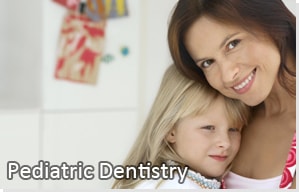

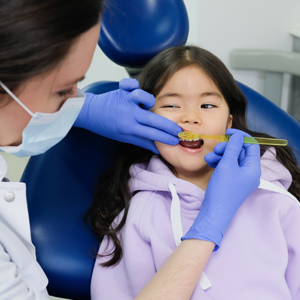 Post-Op Instructions
Post-Op Instructions
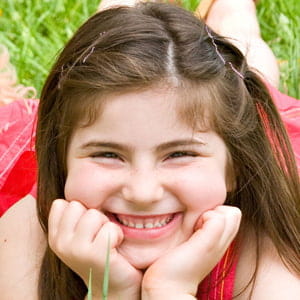 Prevention
Prevention
 Restoration
Restoration
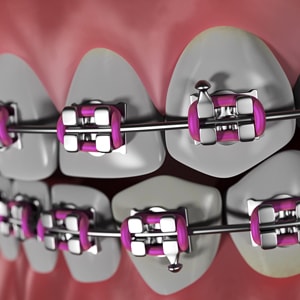 Orthodontics
Orthodontics
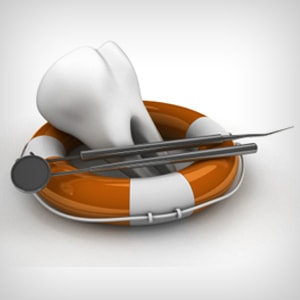 Our Services
Our Services

